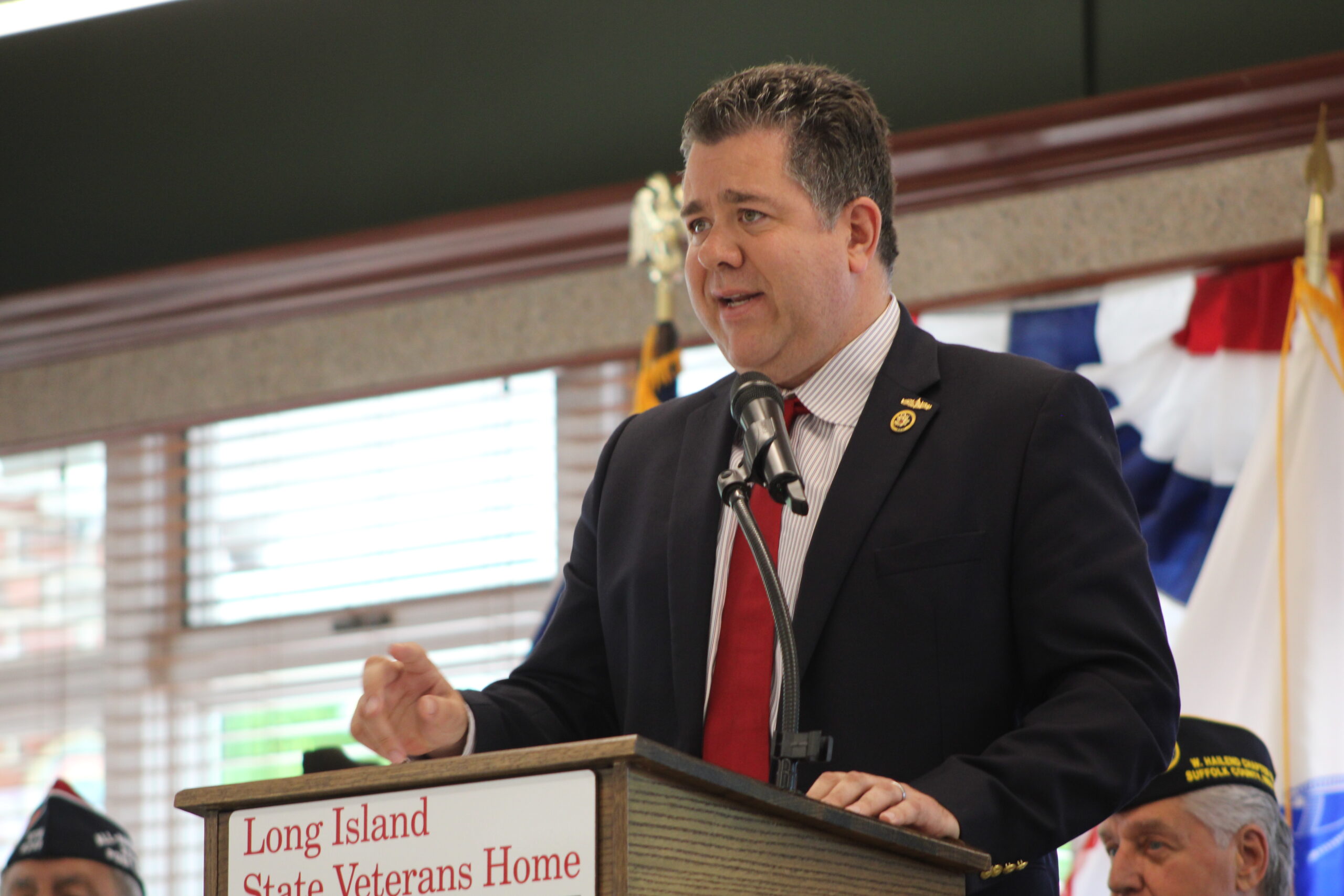
Cover credit – Matt Meduri
In an effort to combat the ever-growing scourge of street drugs, namely synthetic opioids such as fentanyl, Congressman Nick LaLota (R, NY-01), along with Congressman Lou Correa (D, CA-46) sponsored a bipartisan bill in June that would require the Science and Technology Directorate at the Department of Homeland Security (DHS) to increase their technology, methods, and analysis to better detect the illegal substances and aid law enforcement agencies in their responses.
H.R. 8663, the Detection Equipment and Technology Evaluation to Counter the Threat of (DETECT) Fentanyl and Xylazine Act, passed the lower chamber on Monday.
It is the freshman congressman’s sixth bill to be passed by the U.S. House since his tenure began last January and ranks third of seventy-four freshman lawmakers in terms of bills passed to date.
The bill is especially pertinent to Suffolk County, where law enforcement officials continue to grapple with the staggering rates of overdose deaths and substance abuse, as well as the seemingly-ubiquitous nature of fentanyl, a highly addictive, synthetic opioid that has unparalleled lethal powers.
The bill also addresses xylazine, commonly known as “tranq,” a cattle sedative that has been used to cut drugs to lower costs and increase euphoric attributes. Xylazine is known for causing a user’s skin to rot, earning it the nickname “the zombie drug.”
Xylazine’s effects are also not reversible with Naloxone (Narcan), as fentanyl’s effects are.
LaLota’s bill would create a new statutory responsibility for the Science and Technology Directorate of the DHS to conduct research, development, testing, evaluation, and cost-benefit analysis to improve the safety, effectiveness, and efficiency of drug detection equipment and reference libraries used by federal, state, local, and tribal law enforcement agencies.
Additionally, the bill establishes three primary areas of focus: portable detection equipment that requires minimal handling of drug samples; equipment that can separate complex mixtures with low concentrations of drugs and high concentrations of cutting agents; and technologies that use Artificial Intelligence (AI) and machine-learning to predict whether a substance is a controlled substance or a new, synthetic substance now yet logged in a reference library.
Detecting cutting agents is a crucial part of the bill, as only two milligrams of fentanyl is determined to prove fatal for most people. A seemingly-innocuous pill purchased from a street dealer, such as Xanax or Adderall, have frequently been found to be cut with the dangerous opioid, causing a skyrocket in overdose deaths.
The bill would also require the Science and Technology Directorate of the DHS to follow the recommendations, guidelines, and best practices set forth in the federal government’s Artificial Intelligence Risk Management Framework, and would direct the same branch of the DHS to look into the Drug Enforcement Agency’s (DEA) State and Territory Report on Enduring and Emerging threats in establishing their priorities.
The report outlines that the North Atlantic Region, in which New York is included, sees cocaine, fentanyl, methamphetamine, xylazine, and heroin as the top-five drugs detected, respectively.
Fentanyl scores a top-five spot on the lists of the other three regions, while xylazine is absent from the top five spots in the Mountain Pacific and Southern regions.
The report also identifies New York as a hotspot for the Sinaloa Cartel, a large, international organized crime syndicate based in Mexico that is a notorious purveyor of drug trafficking and money laundering.
“The House has just passed the DETECT Fentanyl and Xylazine Act, a vital step toward addressing the deadly opioid crisis sweeping our nation. This bipartisan legislation will empower law enforcement with cutting-edge technology to detect and stop the flow of lethal substances like fentanyl and xylazine before they reach our streets,” said LaLota. “With over 107,000 overdose deaths last year alone, this bill is a critical measure in saving lives and protecting communities across America. I am deeply grateful to my colleagues in the House for recognizing the urgency of this crisis and swiftly passing this critical legislation and I urge the Senate to do the same.”
The legislation has been endorsed by the National Association of Police Organizations, the Federal Law Enforcement Officers Association, the Sergeants Benevolent Association of the NYPD, the National Border Patrol Council, the National Treasury Employees Union, the National Narcotic Officers’ Associations’ Coalition, Shatterproof, the National HIDTA Directors Association, and the National Association of Counties.